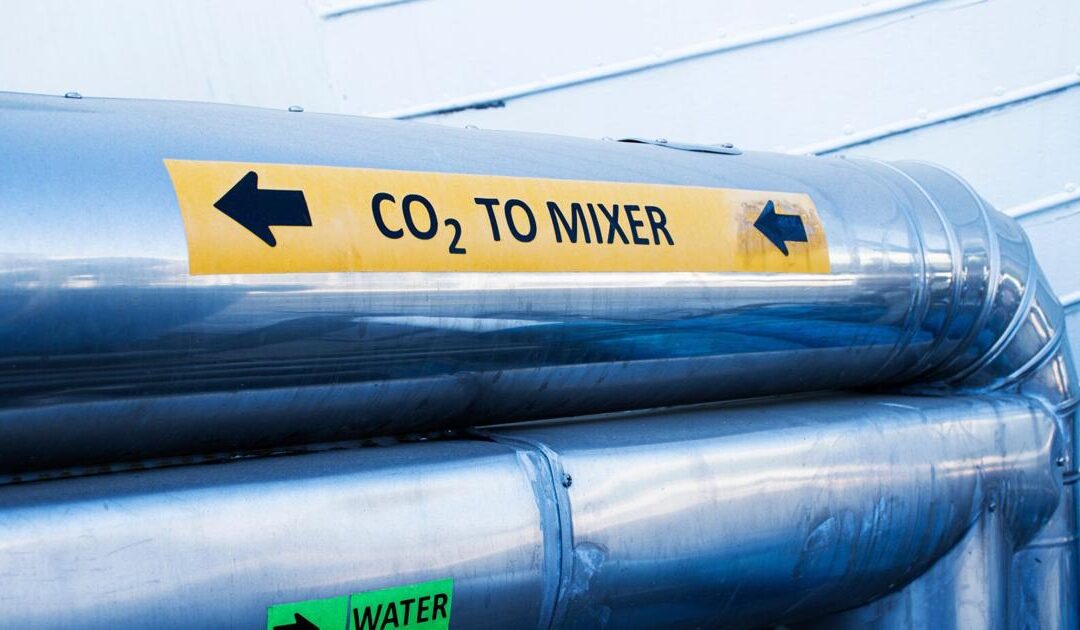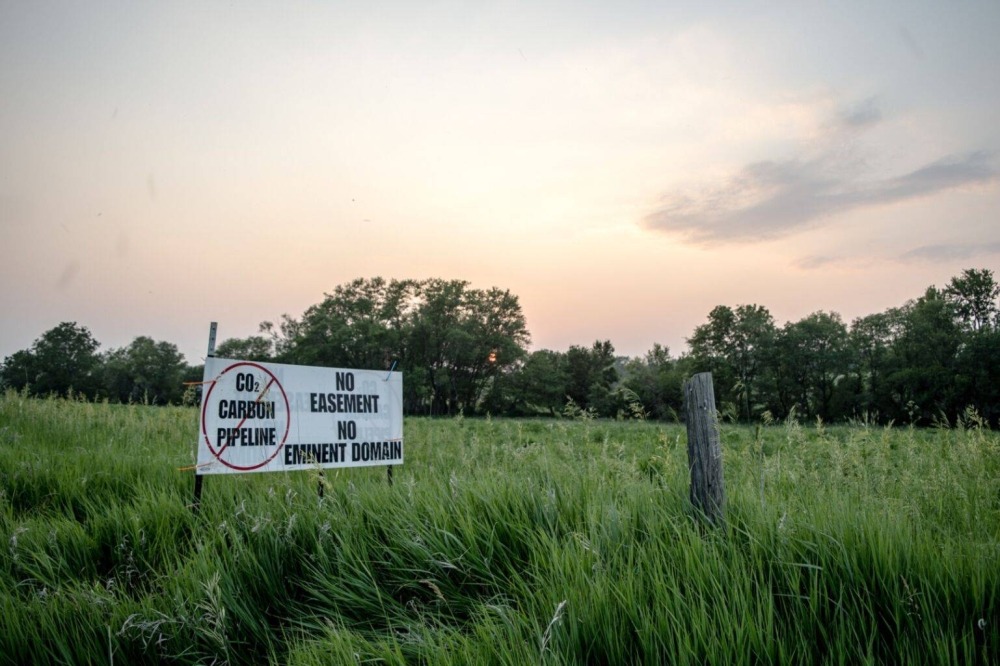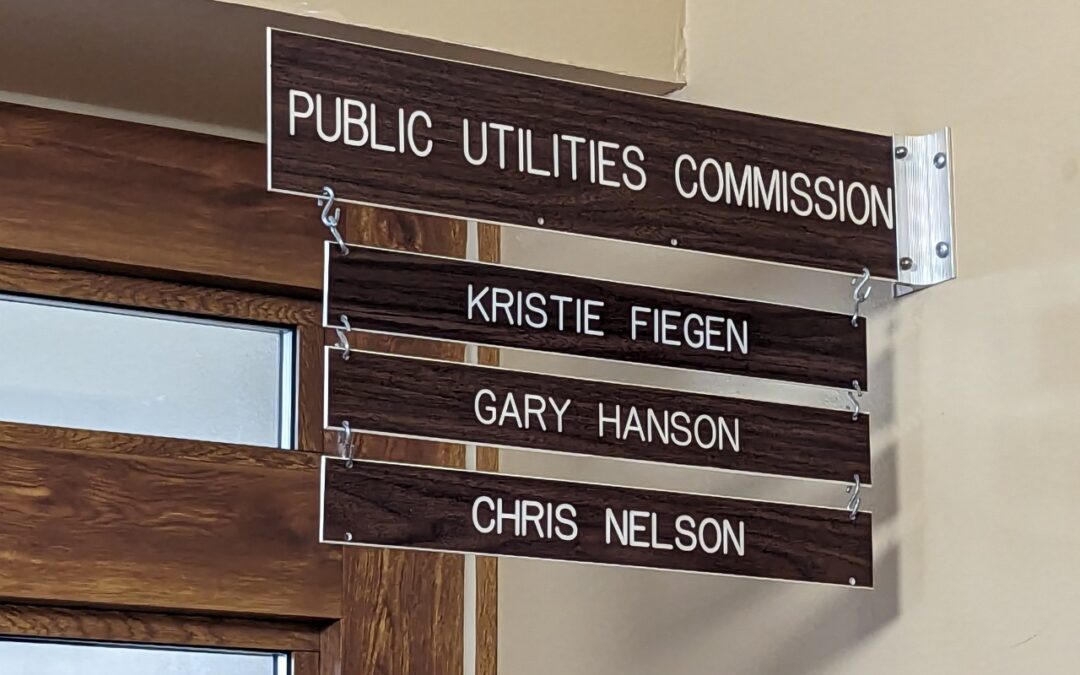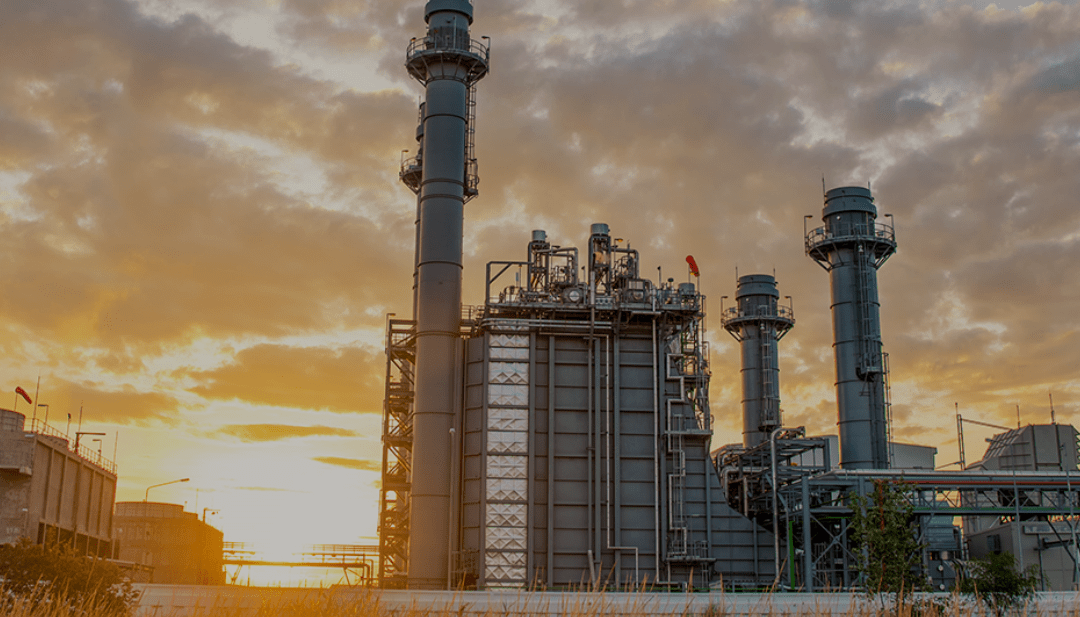
by Jordan Mason | Aug 25, 2023 | Archived
(The Center Square) – The Illinois Commerce Commission is considering a proposal to allow a Canadian company to build a CO2 pipeline through the state.
Wolf Carbon Solutions, the Canadian energy infrastructure entity with U.S. operations headquartered in Denver, filed its application with the Illinois Commerce Commission (ICC) June 16.
The pipeline would originate in Iowa, travel through the Quad Cities, then near Peoria, then on to Decatur. Archer Daniels Midland Company would serve as the pipeline’s “anchor customer” and be responsible for capturing CO2 emissions generated by its ethanol facilities in Iowa.
There has been some pushback from environmental groups, including from the Coalition to Stop CO2 Pipelines. Joyce Blumenshine, spokesperson for Sierra Club Illinois, said they are worried about safety because the proposed route runs close to homes and businesses in Peoria.
“For the public and people nearby, number one, and for the long term impacts to our prime farmland,“ Blumenshine told The Center Square. “We don’t have any idea what property value impacts might be.”
Blumenshine points to an incident in 2020 in Satartia, Mississippi, when a CO2 pipeline burst and sent dozens of residents to the hospital.
During a recent rally in Peoria, Jerry Briggs, a first responder at the Satartia incident, said it is important that all first responders, including law enforcement, understand the potential dangers of these pipelines
“First responders need recurring training, all communities affected by CO2 pipelines must have access to a mass notification system, and community members should be well informed. CO2 pipelines might be out of sight underground, but they can’t be out of mind,” Briggs said.
Gov. J.B. Pritzker said the legislature might get involved depending on the outcome with the ICC.
“I’m concerned that it will raise the prospect of safety challenges and raise the prospects of, as we’ve seen in other states, that if there is some sort of leak, that this could be a problem for all of Illinois,” Pritzker said.
Wolf Carbon Solutions reports in its application the project could generate an estimated $2.8 billion in economic impact across both Illinois and Iowa. A request for comment from the company was declined.
The ICC is also considering a petition from Nebraska-based Navigator CO2 Ventures to build 292 miles of the Heartland Greenway Pipeline System through Sangamon County in Illinois.

by Jordan Mason | Aug 22, 2023 | Archived
Not only does Summit Carbon Solutions want to take your land, but it also wants to take your water. The Iowa company, which wants to run a network of carbon dioxide pipelines across South Dakota to cash in on federal tax credits for carbon sequestration, wants to drill a well near Redfield and take 21 million gallons of water a year:
A corporate entity affiliated with Summit Carbon Solutions, called Redfield SCS Capture, has applied to drill a well that could take up to 21 million gallons of water per year from the Dakota Aquifer, which is an amount equivalent to about 32 Olympic-sized pools.
The well would be about 1,100 feet deep and located a few miles north of Redfield, in the same area as the Redfield Energy ethanol plant, which is a partner in the Summit pipeline project.
The state Department of Agriculture and Natural Resources said in a written statement to South Dakota Searchlight that the water will be used for “non-contact cooling.” The department provided no further information, and Summit did not respond to multiple Searchlight messages. Other sources interviewed for this story speculated the water will be used to cool pipes carrying pressurized carbon dioxide.
After its use, the water would be discharged into a local waterway, DANR’s report says. The report does not say which body of water, but the site is near Turtle Creek and the James River [Joshua Haiar, “Carbon Pipeline Company’s Water-Rights Application Sparks Opposition,” South Dakota Searchlight, 2023,08.20].
The state says that in 1982, the Dakota Aquifer had around 124 trillion gallons of water, enough to cool the carbon dioxide pipeline near Redfield for 5.9 million years. But some neighbors are concerned the project could hurt their water supply:
One of those nearby residents is Debra Curtis, who ranches about 2.5 miles from the proposed Summit well and fears it would “reduce the water pressure and flow of my well.”
Dave and Stacey Marlow wrote to the department that their drive-in theater “will not have adequate water pressure to continue business” if the project is permitted.
“I was told that much water being extracted will create a cone-shaped vacuum into the aquifer,” Dave Marlow told South Dakota Searchlight. “And for wells only a mile or so away, like ours, there’s just not enough pressure” [Haiar, 2023.08.20].
Concerned water users will get a chance to voice their opposition to Summit Carbon Solution’s well application before the state Water Management Board at a contested case hearing on October 4 in Pierre.

by Jordan Mason | Aug 22, 2023 | Archived
FORT DODGE, Iowa (KTIV) – The first big test for carbon-capture pipelines in Iowa begins Tuesday in Fort Dodge.
Summit Carbon Solutions is set to begin its evidentiary hearing in front of the Iowa Utilities Board.
Summit Carbon Solutions is seeking a permit to construct, operate and maintain 687 miles of pipeline across 29 counties in northwest and central Iowa. In total, the pipeline would cross 2,000 miles of land across 5 states. That pipeline will carry hazardous liquid carbon dioxide from roughly a dozen ethanol plants in Iowa to North Dakota to be stored under caprock.
Summit Carbon Solutions is also seeking the right of eminent domain over more than 900 parcels of Iowa land on the proposed route.
The hearing, scheduled to begin Tuesday in Fort Dodge, is expected to last several days.
KTIV will be in Fort Dodge tomorrow and will provide fill coverage from the hearings here on News 4.
Copyright 2023 KTIV. All rights reserved.

by Jordan Mason | Aug 22, 2023 | Archived
PIERRE, S.D. (KELO) — Attorneys from multiple sides of the fight over Navigator building a carbon-dioxide pipeline in South Dakota will face off at the state Capitol later this week for an argument that’s never come up before.
The South Dakota Public Utilities Commission is deciding whether to issue a permit to Navigator. A state law passed in 1981 lets the state commission supersede or pre-empt local land-use controls for some trans-state projects — but only when the requirements are “unreasonably restrictive.”
Navigator’s permit could turn on what the state commission decides regarding pipeline ordinances in Minnehaha County and Moody County. The same could be true for the CO2 pipeline that Summit Carbon Solutions wants to build. The county ordinances were passed after both companies applied to the state commission.
The commission has completed the main hearing on the Navigator project and plans to decide on the permit September 6. The commission will hold a special mini-hearing for Thursday, August 24, and if necessary the following day, to consider the pre-emption question.
What the state commission decides on pre-emption could decide whether the Navigator project moves ahead. That’s because company officials have already testified in the permit hearing that the project is a no-go if the Minnehaha and Moody ordinances are allowed to stand.
Minnehaha County and Moody County plan to present witnesses Thursday.
The state commission’s decision might not be the final word, however. Any of the sides could challenge the state commission’s ruling in court.
What the state commission decides regarding pre-emption could also affect the SCS project. The state hearing on the SCS application starts September 11. Attorneys for SCS on Monday asked the state commission to pre-empt pipeline ordinances in Minnehaha, Spink, Brown and McPherson counties.

by Jordan Mason | Aug 22, 2023 | Archived
By Nicholas Klein, Staff Mechanical Engineer, Burns & McDonnell
By Tisha Scroggin-Wicker, PE, Director, Process Technology, Burns & McDonnell
Carbon capture, utilization and storage (CCUS) technologies make it possible to prevent up to 95% or more of a power plant’s carbon dioxide emissions from entering the atmosphere. The Inflation Reduction Act (IRA) of 2022 established a significant revenue stream that carbon capture facilities can leverage, leading to a successful project economic pro forma.
Faced with renewable energy requirements and carbon dioxide (CO2) reduction goals and mandates, utilities with aging coal-fired power plants or industrial hydrogen producers have had few choices other than to plan their plants’ retirements. Carbon capture provides an opportunity for these facilities to support decarbonization goals, generate lower carbon intensity power and reinvent their purpose by generating revenue through the capture of carbon.
Carbon capture technologies make it possible to remove CO2 from plant emissions. Existing power plants retrofitted, and new plants outfitted with carbon capture systems have the potential to continue supporting jobs in their communities and extending their operating lives by a decade or more.
When installing carbon capture systems, utilities must consider how they will dispose of and benefit from the large amounts of captured CO2. Currently, there are two predominant options. One is geological sequestration, which involves injecting the CO2 into very large underground geological formations for permanent storage and sequestration. That means disposing of CO2 as a waste product, which requires costly infrastructure and permitting, along with overcoming potential public opposition. This option is highly location-dependent, likely requiring a facility to be near the required geologic formation or a CO2 transport pipeline to remain economically feasible. Leveraging existing or new pipeline networks for the transport of CO2 is a potential transportation avenue. Securing permits for new CO2 pipelines, especially interstate pipelines, has thus far been challenging but pipeline development continues to progress and advance.
Another option is to sell the CO2 to the oil industry for enhanced oil recovery (EOR). Oil companies utilizing CO2 for EOR are typically willing to pay for the CO2, since they currently rely on natural CO2 sources found underground. Captured CO2 can be used to replace and supplement these resources. The potential supply of CO2, however, greatly exceeds likely demand from EOR utilization. This option is also highly dependent on the proximity of the plant to CO2 pipelines or oil fields with sufficient capacity to transport the captured gas.
Does the installation of a carbon capture system make economic sense? This is the question a growing number of utility and power producers are asking, and projects in development are expected to provide the answer.
DOE funding initiative
As a result of recent legislation, the U.S. Department of Energy (DOE) has been able to offer unprecedented levels of funding for carbon capture projects. Within the Infrastructure Investment and Jobs Act (IIJA) passed in 2021, the DOE allocated $3.5 billion combined for demonstrations and pilots along with $2.5 billion for the development of large-scale carbon storage commercial projects. Additionally, $310 million for carbon utilization applications and $100 million for technology and front-end engineering and design (FEED) projects were allotted.
Additional funding was made available through IIJA for direct air capture (DAC), involving $3.5 billion for multiple hubs across the country to capture and either store or make use of CO2. Prizes worth $115 million are also obtainable in technology competitions for creative processes seeking to develop DAC as a viable approach for carbon removal.
To jump-start the commercialization of carbon capture technologies, the DOE recently announced $189 million in available awards for nine FEED studies associated with carbon capture demonstration projects. These studies involve an assortment of carbon capture technologies and sites, including coal, integrated gasification combined-cycle, natural gas combined-cycle, cement and cogeneration facilities. DOE funding has been earmarked for projects designed to accelerate the deployment of existing carbon capture technologies and the development and refinement of new ones, as well as the assessment and verification of commercial‑scale CO2 storage. By deploying a variety of large-scale CCUS pilot and demonstration projects, the DOE expects to build the knowledge base needed to test and further prove the viability of carbon capture technologies on a commercial scale.
45Q tax credits
The new 45Q tax credits set forth in the IRA of 2022 form the economic engine propelling this market forward. Section 45Q of the Internal Revenue Service tax code has been substantially updated to increase incentives per metric ton of CO2 to $60 for utilization or EOR, and $85 for sequestration, if apprenticeship and prevailing wage requirements are met. The minimum carbon capture requirements that power plants need to meet to be eligible for these tax credits include capturing at least 75% of CO2 emissions and 18,750 metric tons of CO2 annually. Similar to the 2018 update, these credits would be accessible for 12 years after a project begins operation. DAC sites must capture at least 1,000 metric tons of CO2 annually in order to qualify for tax credits assessed per metric ton of CO2 that are $130 for utilization or EOR and $180 for sequestration if applicable conditions for apprenticeship and prevailing wages are reached.
The IRA also provides the option for these tax credits to be issued through direct payments to for-profit entities (for up to five years after the initial operation date) and tax-exempt organizations (for up to the full 12 years after the initial operation date). Additionally, there is potential for transfer or sale of part or all of these tax credits.
The 45Q rule lays out the relevant qualification requirements. To receive the tax credit for geologic storage, a utility must meet the U.S. Environmental Protection Agency’s (EPA) sequestration reporting rules (40 CFR Part 98, Subpart RR), which include a monitoring, reporting and verification plan that documents the amount of carbon injected and stored. Entities seeking credits for EOR have the choice of satisfying either EPA regulations governing geological CO2 sequestration or the CO2 storage guidelines developed by the International Organization for Standardization (ISO) and the American National Standards Institute (ANSI) (CSA/ANSI ISO 27916:19).
The rules also outline that the IRS can recapture the credit if the carbon is intentionally leaked or withdrawn from storage. Once the carbon capture system begins commercial operation, the IRS can reclaim the credit up to the earlier date of three years after the date the tax credit is last claimed or the date when monitoring ends.
Together, these 45Q changes make implementation of carbon capture technology a more economically attractive proposition for utilities while not limiting the industry with a tax credit cap. There is, however, a catch: To be eligible, construction of these projects must commence by Jan. 1, 2033.
Carbon capture and storage technologies
Utilities and others contemplating post-combustion carbon capture projects have several options to choose from that are in varying stages of development. Processes in this space include membranes, adsorption with solid state sorbents, cryogenics, enzymes and chilled ammonia. Absorption through liquid solvents, primarily amines, is the most common carbon capture method currently being assessed and deployed.
Originally developed in the 1930s, amine technology has been used for decades in a variety of applications, including post-combustion carbon capture. Amine processes have become the primary method used by power plants, with proven capabilities of removing 95% or more of CO2 from emissions. Amines are chemical solvents that undergo a reversible reaction with CO2 and other acidic gases. During the amine-based process, when exhaust gas containing CO2 comes in contact with a liquid amine solution, the CO2 chemically binds to the amine molecules and is removed from the gas stream. This amine solution can be pumped into a separate column where heat is used to reverse the process, stripping the high-quality CO2 from the amine. The CO2 can then be compressed for EOR use or injected into a suitable geological formation for storage.
Many DOE-funded carbon capture projects to date employ amine-based processes. The differences between individual processes are primarily in their “secret sauce” — the proprietary chemicals used to increase the efficiency of the amine solution. Researchers continue to seek solutions that reduce the amount of auxiliary power and water amine-based systems need to capture and recover carbon, as well as the volume of steam and heat these processes consume during regeneration.
Efforts are also underway to minimize their relatively high capital, operating and installation costs. Non-aqueous solvents (NAS) are emerging as potential avenues to lower steam and auxiliary load demands of these facilities by utilizing less water in the capture process. Applying lessons learned in research and operational settings will support future advancements with these and other carbon capture technologies.
Opportunities and challenges ahead
Operators of power plants will need to determine not only the right carbon capture solutions for their operation, but also how to efficiently integrate them into their existing systems. Current carbon capture technologies can potentially impact power generation operations and efficiency. An experienced integrator that understands power plant operations and can model carbon capture processes is essential to minimizing potential power production losses and identifying opportunities for process optimization.
Before CCUS systems can be fully commercialized, additional challenges must be addressed:
- Reduced capacity factors — The economic feasibility of a carbon capture facility depends on the relative amount of CO2 captured from the flue gas that can generate an adequate revenue stream. As a result, the carbon intensity of the plant is reduced, which increases the value of the electricity generated at the site for consumers looking to decrease their carbon footprint. This poses special challenges to coal plants facing reduced run times in areas with high renewable energy penetration. Since the early 2000s, the capacity factor of many coal plants has dropped significantly, reducing the economic benefit of the capital investment by over half in many cases. A retrofitted plant may be economical to bid into power markets at similar negative power prices as wind currently enters the market.
- Sequestration vs. EOR concerns — Given the increase in 45Q tax credits, power plants appear at first glance to have the most revenue to gain by sequestering recovered CO2 in geological formations. But that may not be the case, as power plants that can obtain additional incremental revenue selling captured CO2 to an EOR off-taker have the potential for similar or greater total revenue generation. Plants located near oil fields are likely in a better position to market their captured carbon for EOR use than those that must transport it hundreds of miles or more for sale.
- Competitive markets — Independent system operators (ISOs) recognize the potential impact CO2 reduction strategies can have on the competitive markets the ISOs design and operate. Those markets optimally run with minimal out-of-market influences, such as subsidies or carbon taxes. ISOs, however, must also create markets that properly reflect the economic impact of state and federal regulations, even without the benefit of any oversight of those regulations.
- Pathway to blue hydrogen — CCUS provides a pathway to reduced carbon emissions for a variety of industrial processes. In the context of conventional hydrogen production methods, CCUS gives existing hydrogen producers the option to invest in a reduced-carbon future via blue hydrogen. CO2 from combustion heating processes can be captured using various technologies from these point sources before being utilized for geologic sequestration, EOR, fertilizer synthesis or commercial use. In general, CO2 is collected, then separated in a cleanup step, transported and delivered to end users.
- Regulatory support — Identifying and understanding the requirements of the relevant governing permitting entities is a crucial part of the development process for CCUS projects. The EPA governs CCUS permitting on the federal level, which applies to states without primacy, or the ability to manage their own permitting programs for geological sequestration. North Dakota, Wyoming and Louisiana have received primacy approvals from the EPA, which allows them to administer their own CCUS permitting systems within their respective states. Additional states are involved in various stages of the EPA’s primacy application process. It is also important to note that 45Q requires a monitoring period of geological formations for any leaks that may occur where vested parties could be liable for reimbursement of investment tax credits to the Treasury department. Awareness of the intricacies associated with CCUS permitting and monitoring is key to optimizing value in the set up and operation of CCUS facilities.
Despite its challenges, carbon capture has substantial political, regulatory and academic support that will likely continue to be incentivized through federal legislation, DOE support and state mandates. This provides opportunities for new plants to be designed with carbon capture capabilities in mind and existing sites to have a second life as carbon capture facilities.





/cloudfront-us-east-1.images.arcpublishing.com/gray/N3O7Z2PKCVA5PIORT4P36IDEEE.png)

